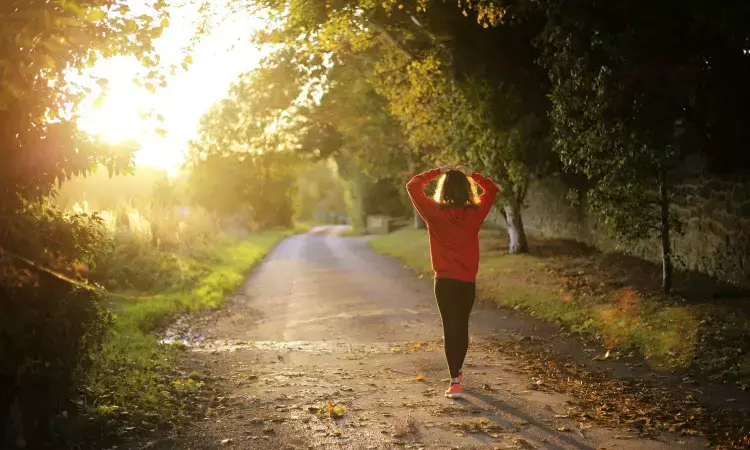- Home
- Medical news & Guidelines
- Anesthesiology
- Cardiology and CTVS
- Critical Care
- Dentistry
- Dermatology
- Diabetes and Endocrinology
- ENT
- Gastroenterology
- Medicine
- Nephrology
- Neurology
- Obstretics-Gynaecology
- Oncology
- Ophthalmology
- Orthopaedics
- Pediatrics-Neonatology
- Psychiatry
- Pulmonology
- Radiology
- Surgery
- Urology
- Laboratory Medicine
- Diet
- Nursing
- Paramedical
- Physiotherapy
- Health news
- Fact Check
- Bone Health Fact Check
- Brain Health Fact Check
- Cancer Related Fact Check
- Child Care Fact Check
- Dental and oral health fact check
- Diabetes and metabolic health fact check
- Diet and Nutrition Fact Check
- Eye and ENT Care Fact Check
- Fitness fact check
- Gut health fact check
- Heart health fact check
- Kidney health fact check
- Medical education fact check
- Men's health fact check
- Respiratory fact check
- Skin and hair care fact check
- Vaccine and Immunization fact check
- Women's health fact check
- AYUSH
- State News
- Andaman and Nicobar Islands
- Andhra Pradesh
- Arunachal Pradesh
- Assam
- Bihar
- Chandigarh
- Chattisgarh
- Dadra and Nagar Haveli
- Daman and Diu
- Delhi
- Goa
- Gujarat
- Haryana
- Himachal Pradesh
- Jammu & Kashmir
- Jharkhand
- Karnataka
- Kerala
- Ladakh
- Lakshadweep
- Madhya Pradesh
- Maharashtra
- Manipur
- Meghalaya
- Mizoram
- Nagaland
- Odisha
- Puducherry
- Punjab
- Rajasthan
- Sikkim
- Tamil Nadu
- Telangana
- Tripura
- Uttar Pradesh
- Uttrakhand
- West Bengal
- Medical Education
- Industry
Neighborhood walkability and residential greenness linked to Lower Fracture Risk: JAMA

In a recent study published in Journal of American Medical Association uncovered a significant connection between neighborhood walkability and residential greenness, and a lower risk of incident fractures among individuals aged 40 and older.
The study, which commenced in June 2015 and concluded in February 2023, sheds light on how the living environment may influence the bone health. A total of 23,940 participants, of which 57.4% were female, were closely observed during the study, which spanned 134,638 person-years. The mean age of participants at the outset of the study was 63.4 years.
The research, using the International Statistical Classification of Diseases and Related Health Problems, Tenth Revision codes via the Yinzhou Health Information System to identify incident fractures, unearthed compelling evidence. According to the findings, individuals residing in neighborhoods with greater walkability and residential greenness demonstrated a notably reduced risk of fractures.
In the fully adjusted model, for every interquartile range (IQR) increment in neighborhood walkability and residential greenness, there was a corresponding decrease in the hazard ratio (HR) for fracture risk. Specifically, an IQR increase in neighborhood walkability was associated with an HR of 0.88 (with a 95% confidence interval of 0.83-0.92), while residential greenness showed a similar pattern, with an HR of 0.84 (with a 95% confidence interval of 0.80-0.89).
Even more intriguingly, the study revealed a synergistic effect between walkability and greenness. In neighborhoods boasting the highest quartile of walkability, the risk of fracture was significantly lower. The HR for greenness in the top quartile of walkability neighborhoods was just 0.62 (with a 95% confidence interval of 0.46-0.82), suggesting that the benefits of green spaces are maximized in areas designed for pedestrian-friendly living.
These findings underscore the value of creating neighborhoods that promote walkability and provide access to green spaces, not only for physical activity but also for overall well-being. As our world becomes increasingly urbanized, this study offers valuable insights into how we can design cities and communities to support healthier, more active lives and reduce the risk of fractures among older adults.
Reference:
Zhu, Z., Yang, Z., Xu, L., Wu, Y., Yu, L., Shen, P., Lin, H., Shui, L., Tang, M., Jin, M., Wang, J., & Chen, K. (2023). Exposure to Neighborhood Walkability and Residential Greenness and Incident Fracture. In JAMA Network Open (Vol. 6, Issue 9, p. e2335154). American Medical Association (AMA). https://doi.org/10.1001/jamanetworkopen.2023.35154
Neuroscience Masters graduate
Jacinthlyn Sylvia, a Neuroscience Master's graduate from Chennai has worked extensively in deciphering the neurobiology of cognition and motor control in aging. She also has spread-out exposure to Neurosurgery from her Bachelor’s. She is currently involved in active Neuro-Oncology research. She is an upcoming neuroscientist with a fiery passion for writing. Her news cover at Medical Dialogues feature recent discoveries and updates from the healthcare and biomedical research fields. She can be reached at editorial@medicaldialogues.in
Dr Kamal Kant Kohli-MBBS, DTCD- a chest specialist with more than 30 years of practice and a flair for writing clinical articles, Dr Kamal Kant Kohli joined Medical Dialogues as a Chief Editor of Medical News. Besides writing articles, as an editor, he proofreads and verifies all the medical content published on Medical Dialogues including those coming from journals, studies,medical conferences,guidelines etc. Email: drkohli@medicaldialogues.in. Contact no. 011-43720751


